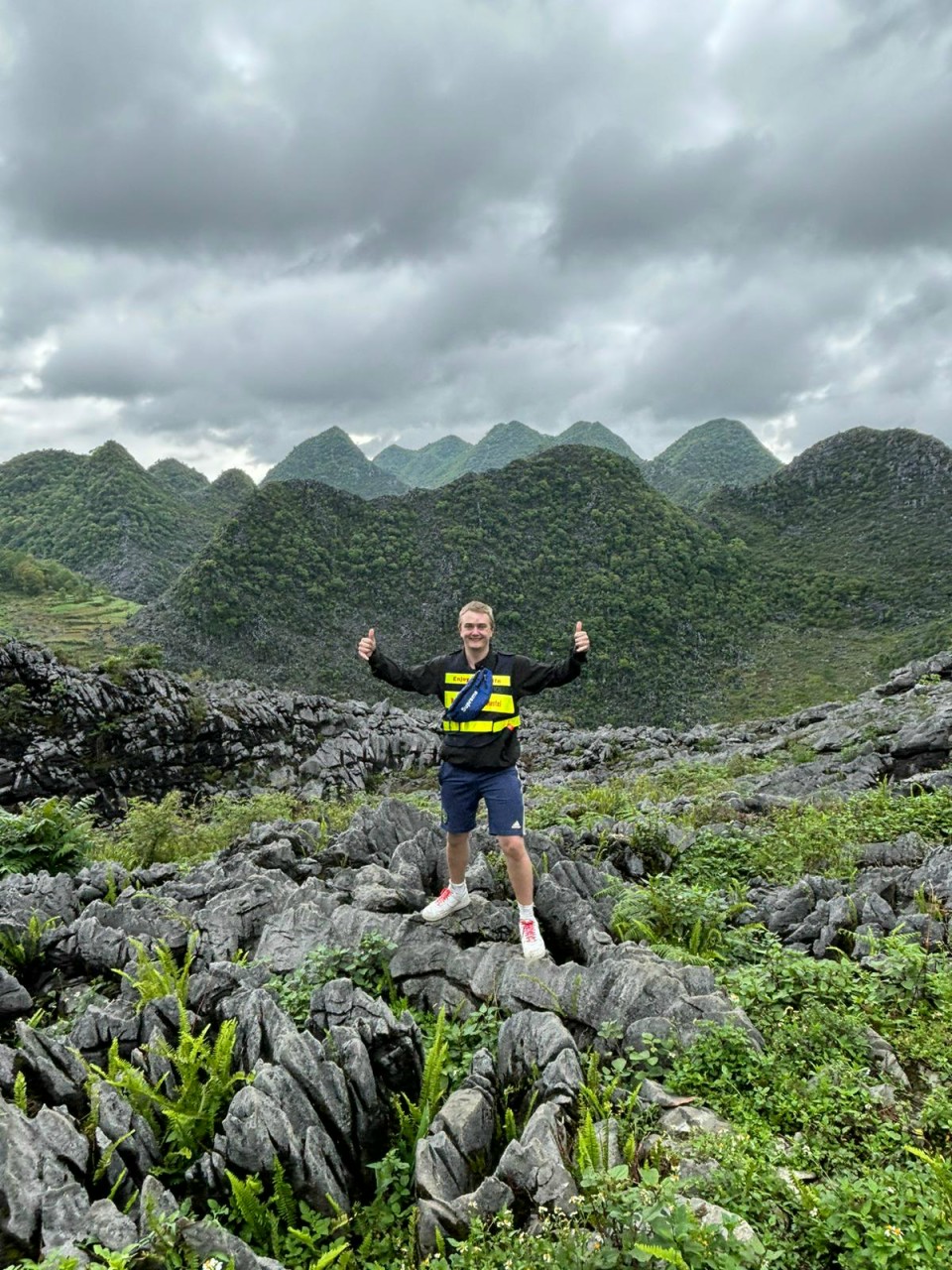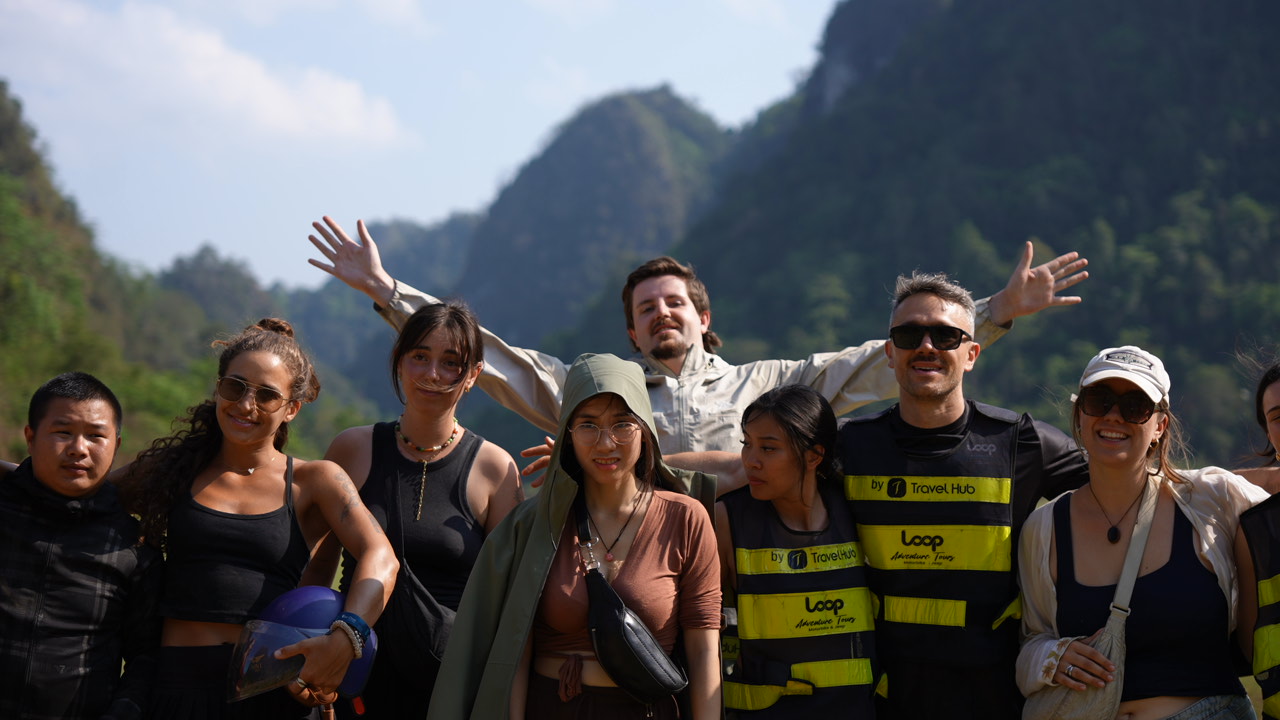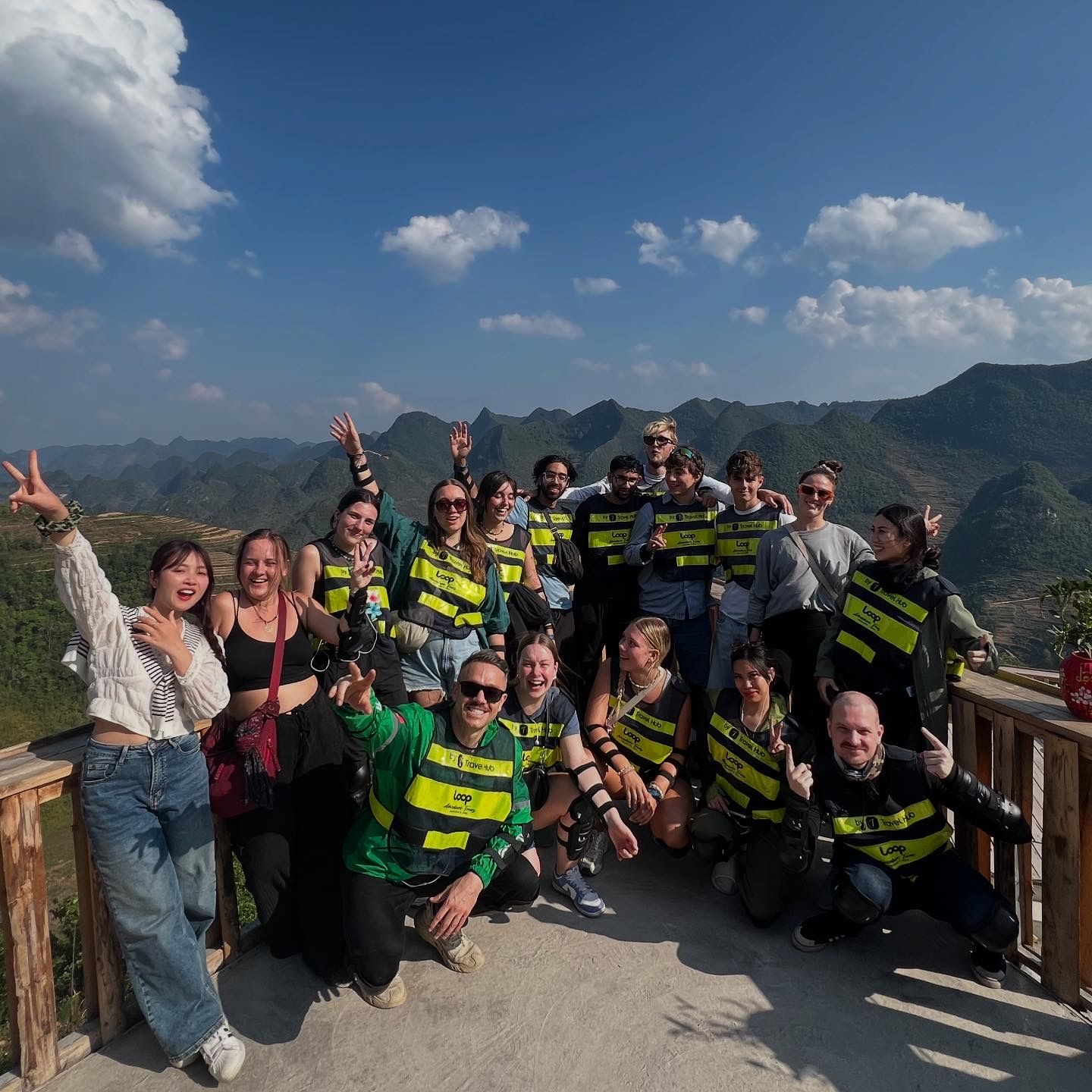Foggy ridgelines, crisp air and quiet markets give Ha Giang in winter a calm, cinematic mood. From December to February, temperatures drop, daylight shortens, and karst passes like Ma Pi Leng trade summer haze for dramatic, low-angled light. If you plan well—layers, daylight-only travel, and flexible timing—you’ll enjoy crowd-light viewpoints, homestay warmth, and bowls of au tau porridge after chilly rides. This guide breaks down real-world winter weather, the best 2–4 day itineraries, what to pack, expected costs, safety and photography tips, plus FAQs so you can plan the Loop with confidence.
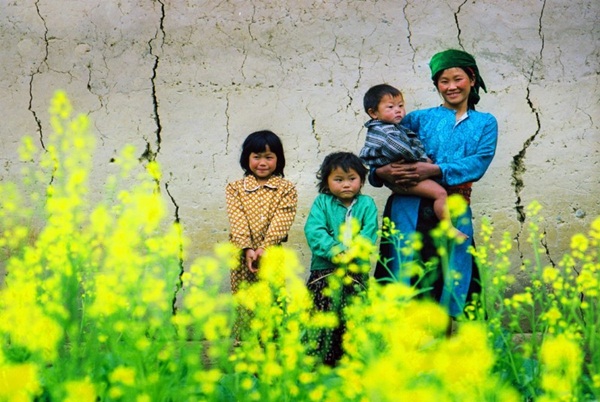
Weather: what Ha Giang in winter actually feels like
-
Temperatures: mornings and nights can dip to single digits °C on the plateau; afternoons usually reach the low to mid-teens °C (50s–60s °F). Wind on high passes makes it feel colder.
-
Sky & visibility: expect a mix of crisp blue afternoons and patchy fog/low cloud early in the day. Drizzle can appear, but long summer-like downpours are rare.
-
Daylight: shorter days—build a 60–90 minute buffer and travel only in daylight.
-
Comfort: choose stays with thick blankets or heaters; hot tea, hotpot, and herbal baths (Dao villages) help on cold evenings.
Bottom line: Ha Giang in winter is cold but photogenic. Clear windows often appear after mid-morning, rewarding patience.

Month-by-month (Dec–Feb)
-
December: early winter. Quiet roads, short days, a pleasing mix of mist and sun. Good value outside holiday weeks.
-
January: coldest month. Morning fog common; wait for the lift around late morning for sweeping views on Ma Pi Leng.
-
February: late winter turning to spring. Peach/plum blossoms start around highland villages; still bring windproof layers.
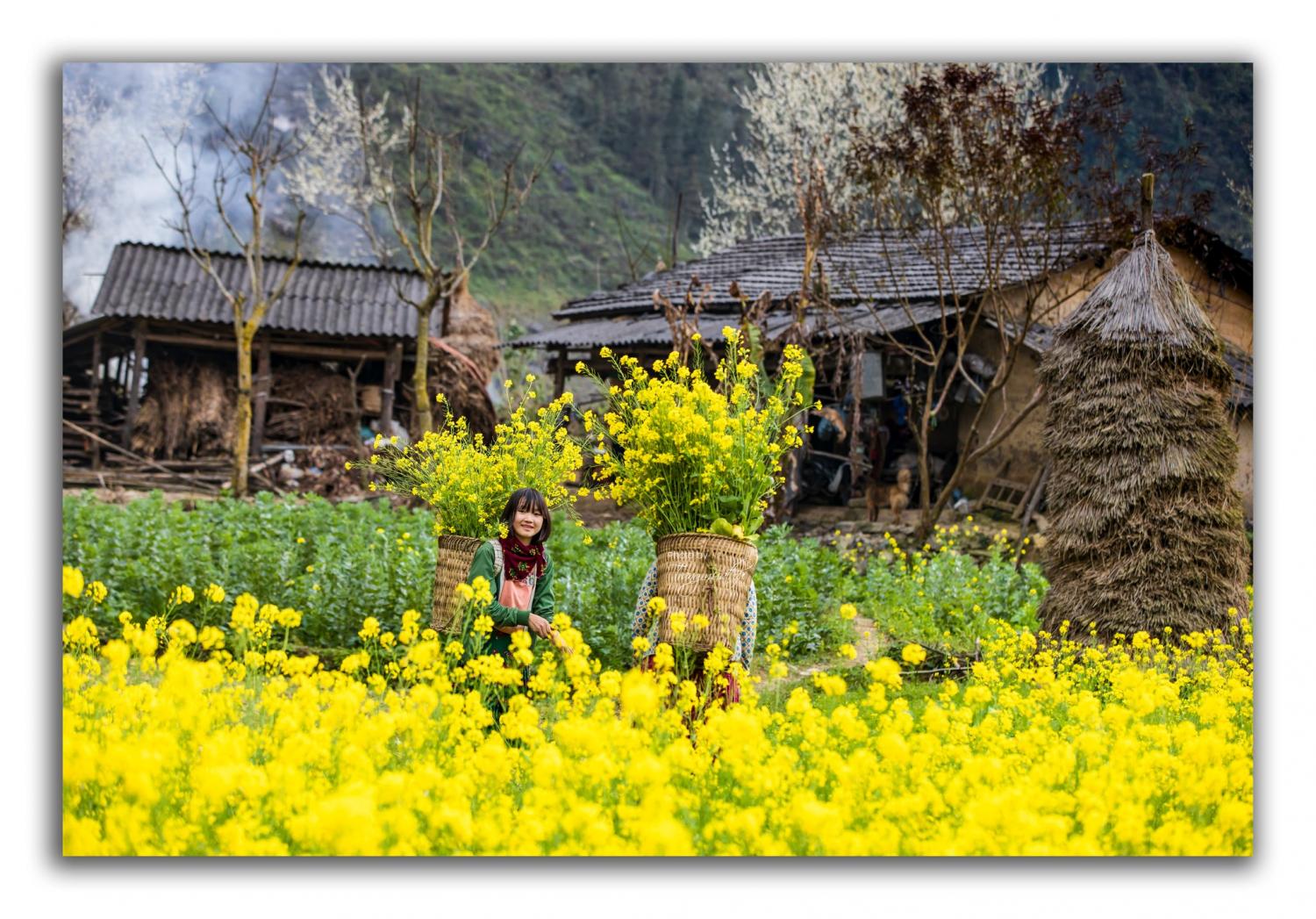
Why visit in winter?
-
Fewer crowds & better availability: easier to secure good bikes, private rooms and experienced guides.
-
Moody light for photos: low sun sculpts limestone ridges and village roofs.
-
Comfort riding (when clear): cool air is kinder than summer heat—just keep timings flexible for fog.
Trade-offs: colder mornings, possible delays due to low cloud, and limited services around Tet (if it falls in Jan/Feb). Plan and book ahead.

Winter-friendly itineraries (2–4 days)
2D1N Highlights (fast but feasible)
Day 1: Ha Giang → Quan Ba Heaven’s Gate & Twin Mountains → Yen Minh pines → Sung La Valley → Vuong Family Palace → Dong Van (Old Quarter).
Day 2: Lung Cu Flag Tower morning → Ma Pi Leng Pass sky paths → optional Nho Que River boat (windproof shell needed) → Meo Vac → return Ha Giang.
Why it works in winter: short riding blocks and essential viewpoints fit daylight hours.
3D2N Classic (best balance)
Day 1: Ha Giang → Quan Ba → Yen Minh → Dong Van (sunset stroll).
Day 2: Lung Cu → Ma Pi Leng viewpoints → Nho Que boat (weather permitting) → Meo Vac family dinner.
Day 3: Meo Vac → Du Gia (waterfall/photo stop if safe) → back to Ha Giang → night bus to Hanoi.

4D3N Slow Travel (photographers & families)
Add Lo Lo Chai sunrise, a cultural night in Nam Dam (Dao village), and longer coffee/photo pauses on Ma Pi Leng. The extra day buys time to wait out fog and chase blue-hour light.
Getting there & getting around in winter
-
Hanoi → Ha Giang City: most travelers use an overnight sleeper or VIP-cabin bus (≈6–7.5 hours). Day limousines exist but reduce riding time.
-
Tour styles:
-
Easy Rider (pillion): ride behind a licensed local—ideal if you’re new to mountains or prefer to keep warm with frequent tea stops.
-
Self-ride (guided): semi-auto/manual 110–150cc behind a lead guide; bring license + IDP and travel insurance.
-
Car/van with driver: warm, dry and safest in fog; perfect for families, seniors and photographers with gear.
-
-
Logistics tips: start slightly later on foggy mornings; aim to finish rides before dusk; confirm fuel stops and road works with your guide/homestay.

Costs (per person, reference ranges)
-
Motorbike rental: 180,000–300,000 VND/day; fuel ~60,000–120,000 VND/day.
-
Easy Rider group tours (3D2N–4D3N): 2.6–6.5M VND including bike + licensed driver, fuel, homestays, some meals.
-
Self-ride guided packages (3D2N–4D3N): 3.2–5.8M VND (bike, fuel, guide, basic gear, stays).
-
Car/van with driver: 2.5–5.0M VND/vehicle/day split among 4–10 travelers.
-
Extras: Nho Que boat 100k–150k VND; small entrance fees (Lung Cu/Vuong Palace).
-
Holiday note: around Tet, prices and availability fluctuate—book earlier than usual.
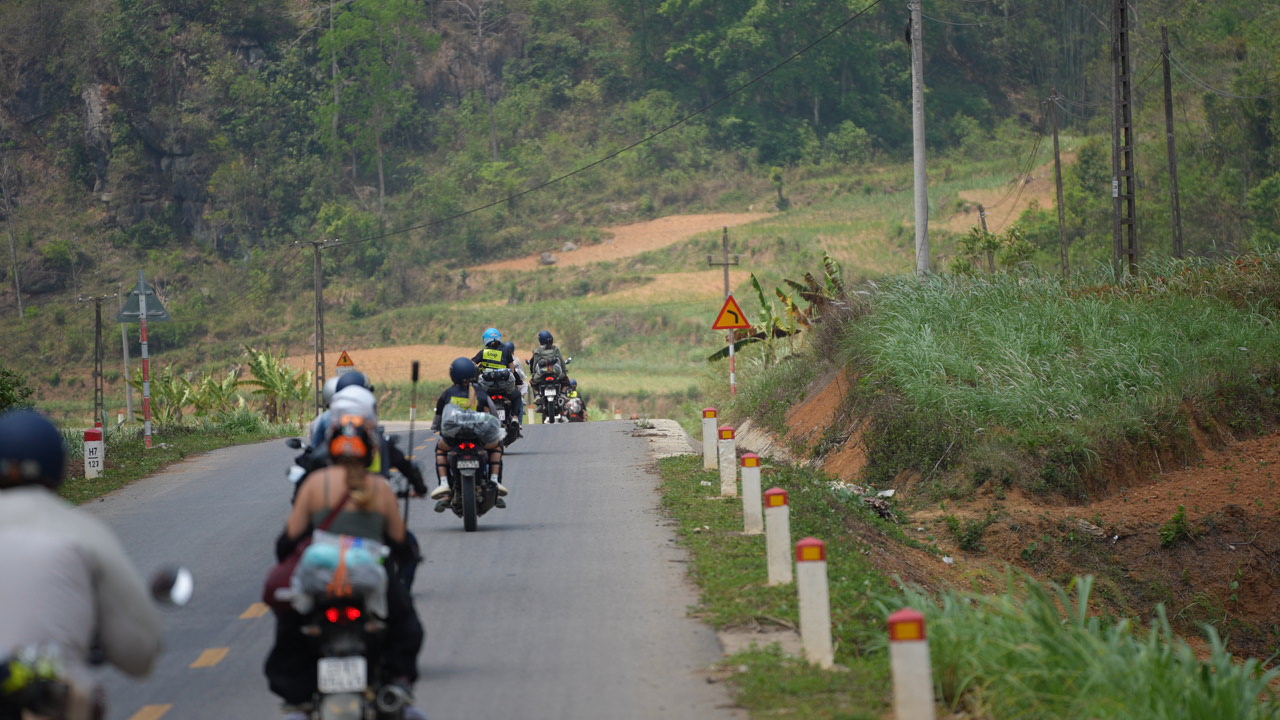
What to pack for Ha Giang in winter
-
Warm layers: thermal base, mid-layer (fleece or light down), windproof/water-resistant shell.
-
Accessories: insulated gloves, beanie or neck gaiter, thick socks, lip balm; hand warmers are a bonus.
-
Riding basics: certified helmet, gloves with grip, long sleeves/pants, sturdy shoes or boots; compact rain jacket and pack cover.
-
Daily essentials: sunscreen (UVA all year), sunglasses, refillable bottle, quick-dry layers, small cash (5k–50k VND).
-
Tech & docs: phone mount, power bank, license + IDP (if riding), travel insurance details, and a microfiber cloth for lens dew.

Safety & etiquette (winter specifics)
-
Daylight only. Fog + hairpins + livestock at dusk are avoidable risks.
-
Cornering technique: look through the turn; use engine braking on descents; avoid hard front-braking on damp concrete.
-
Morning checks: tires, brakes, lights, horn and chain before departure; verify brake feel in the first kilometer.
-
Warmth management: start later if visibility is low; plan tea stops; carry a dry spare layer.
-
Culture & borders: ask before photographing people, keep noise down in villages, carry ID for checkpoints, and pack out trash.

What to see & do in winter
-
Ma Pi Leng Pass & Tu San Canyon: moody, low-sun light; short walks on safe side paths reward patience after fog lifts.
-
Dong Van Old Quarter: stone alleys, weekend night market and winter comfort foods.
-
Lung Cu Flag Tower: wind chill is real—dress for it.
-
Nho Que River boat: stunning but cold on the water—bring a windproof shell and gloves.
-
Markets: Sunday Dong Van or Meo Vac for textile color against gray stone—excellent storytelling frames.
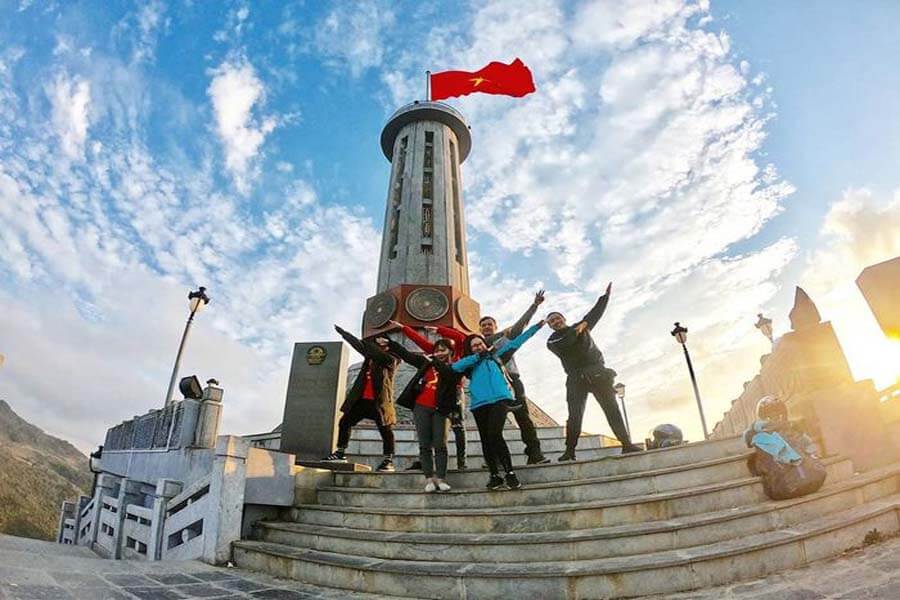
Photography tips for Ha Giang in winter
-
Chase side-light: low sun sculpts ridges at Quan Ba and Ma Pi Leng—arrive a bit after the fog starts to break.
-
Be patient: a 20–40 minute wait can turn whiteout into cloud-sea drama.
-
Protect batteries: cold drains power; keep spares in an inner pocket.
-
Tell human stories: steam from noodle pots, woven textiles, buffalo silhouettes—pair landscapes with daily life.
Sample 3D2N winter itinerary (copy & adapt)
Day 1: Ha Giang (08:30) → Quan Ba Heaven’s Gate (fog watch) → Yen Minh lunch → Sung La → Vuong Palace → Dong Van sunset in Old Quarter.
Day 2: Lung Cu morning (windproof layer) → Ma Pi Leng sky paths → Nho Que boat (15:00, weather permitting) → Meo Vac family dinner.
Day 3: Meo Vac → Du Gia (fields/waterfall if safe) → coffee break → return Ha Giang (17:00) → sleeper bus to Hanoi.

FAQs – Ha Giang in winter
Is it too cold to enjoy the Loop?
Cold, yes—unbearable, no. With thermals and a windproof shell, most travelers are comfortable. Consider Easy Rider or a car/van for maximum comfort.
Can beginners self-ride?
Possible, but choose Easy Rider or car/van if you’re new to mountain roads, dislike fog, or want to focus on photos.
Will I see blossoms?
Late February often brings peach/plum blossoms; December–January are about light, mist and quiet markets.
Is the Nho Que boat running in winter?
Usually, weather permitting. It’s colder on the water—dress accordingly.
Recommended Tours for You:
Conclusion
Ha Giang in winter rewards travelers who trade peak-season crowds for moody light, warm homestays and calm roads. Plan 2–4 slow days, ride or drive only in daylight, and pack thermals plus a windproof shell. Choose the style that fits—Easy Rider for relaxed safety, self-ride for confident riders, or car/van for warmth and photography. Build in a small weather buffer, book key stays ahead of Tet, and move respectfully through border villages. Do that, and winter will give you exactly what you came for: cliff-line horizons on Ma Pi Leng, stone-walled lanes in Dong Van, and a camera roll full of crisp, soul-warming scenes from Vietnam’s northern frontier.
Plan your adventure today! For more details and personalized support, contact Thelooptours Hotline: +84329196074.


